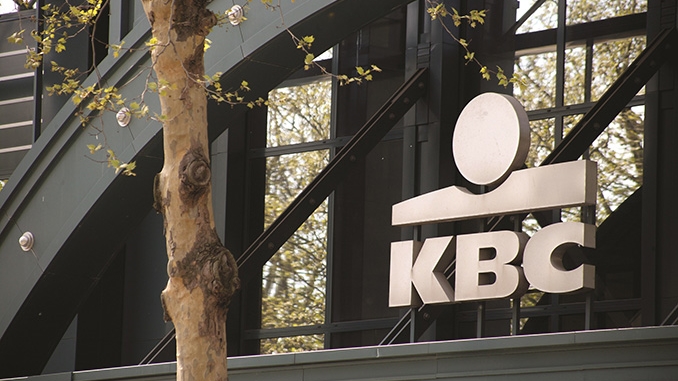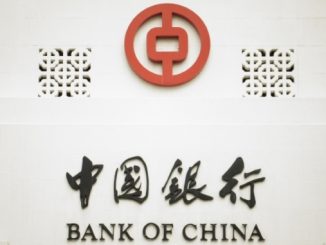
KBC joined the green bond market with a more than thrice-subscribed EUR500m debut on Wednesday, to give green financing power to its clients, according to a KBC official. The senior HoldCo deal was also priced with a substantially smaller premium than recent conventional supply despite markets having been choppy.
Following the completion of a European roadshow presenting KBC’s new green bond framework, the EUR500m no-grow deal for KBC Group NV was launched on Wednesday morning with initial price thoughts of the low 80s over mid-swaps area. Guidance was later set at the 75bp area, plus or minus 3bp will price within range, with books over EUR1.4bn. The spread was subsequently set at 72bp.
The final book stood at EUR1.7bn, including 131 investors. Green accounts were allocated 71% of the deal.
Fund managers took 63%, insurance companies and pension funds 19%, central banks and official institutions 12%, banks and private banks 5%, and others 1%. Accounts in France were allocated 34%, the UK and Ireland 20%, the Benelux 19%, Germany, Austria and Switzerland 13%, the Nordics 9%, Southern Europe 4%, and others 1%.
“We are very happy with the outcome,” Enzo Soi, funding manager at KBC, told Sustainabonds. “We have a deal that was more than three times oversubscribed, which is a good success given that the market was quite volatile at the beginning of the week, with the tariff tensions between the US and China.
“Once the markets went green again on Wednesday, especially the stock markets but also the credit indices, we decided to go ahead with the transaction and the deal went smoothly. Even when we tightened the spread investors stayed in, showing they are happy with our credit and with our green framework.”
Soi said demand for the deal was larger than KBC would probably have attracted with a conventional senior HoldCo issue. He said this could be attributed to the green element and also potentially to the deal’s limited size.
“But I think there was definitely some green benefit for the issuer, especially as the market was volatile in the previous days,” he said.
ABN AMRO and Crédit Agricole were joint green bond structuring advisors, and ABN AMRO, Barclays, Commerzbank, Crédit Agricole and KBC Bank were joint bookrunners.
George Kalbin, director, FI syndicate at Crédit Agricole, said the “stellar” deal showed the advantages of having a green element to a transaction in volatile markets.
“KBC is a very good name, but it’s still very impressive that we saw an order book of above EUR1.6bn staying sticky all the way down to 72bp,” he added.
The deal was deemed to have paid a new issue premium of around 3bp based on KBC’s conventional senior HoldCo curve, with syndicate bankers seeing KBC March 2022s at 60bp, mid, and October 2023s at 71bp. Kalbin noted that in recent weeks, new issue premiums for non-green deals in the senior unsecured market have averaged around 10bp.
“We haven’t seen a concession as low as 3bp for some time in this market,” he said. “The five year is a slightly defensive maturity, but I think most investors would still not view the senior non-preferred product as a defensive product given their volatility when it comes to price.
“It’s an astonishing success that we were able to achieve a minimal concession, which shows green investors acknowledged the high quality of the KBC green bond framework.”
The new issue is the first green bond from a Belgian bank.
“This is the logical link we wanted to establish between green funding and our sustainability policy and the assets that we are generating thereunder,” said Soi. “We are in this way giving extra financing power to our clients to engage in green projects, and that is the objective of this green framework.”
KBC was also interesting in joining the green bond market because of the potential investor diversification benefits it offers, he added.
“The market is becoming ripe for issuance,” said Soi.
The proceeds of the deal will be used to finance residential loans for sustainable housing and as finance for renewable energy projects.
Under KBC’s green bond framework, proceeds can be used to finance or refinance projects and activities in seven categories: renewable energy, energy efficiency, clean transportation, green buildings, pollution prevention and control, water management, and sustainable land use. The framework is aligned with ICMA’s Green Bond Principles, as attested by a second opinion from Sustainalytics.
“The structure that has been put in place for the issue will continue to serve as we bring further green bonds to market on into the future,” said KBC group CEO Johan Thijs, “which will increase the influence we’re able to exert in terms of our sustainable society.”
Green bonds can be issued under the framework via KBC Group NV, KBC Bank NV, or any of its other subsidiaries. The framework is intended to allow for secured and unsecured green issuance in various formats and currencies.
Soi indicated that any green covered bonds KBC may issue in future would be linked to green residential loans in its cover pool.
KBC may consider issuing at least one green bond per year, said Soi, adding that the choice of format will depend on the group’s funding needs.
KBC’s opening of the green bond market for Belgian banks comes after the Belgian government issued its first green bond, a EUR4.5bn 15 year OLO, in February.



